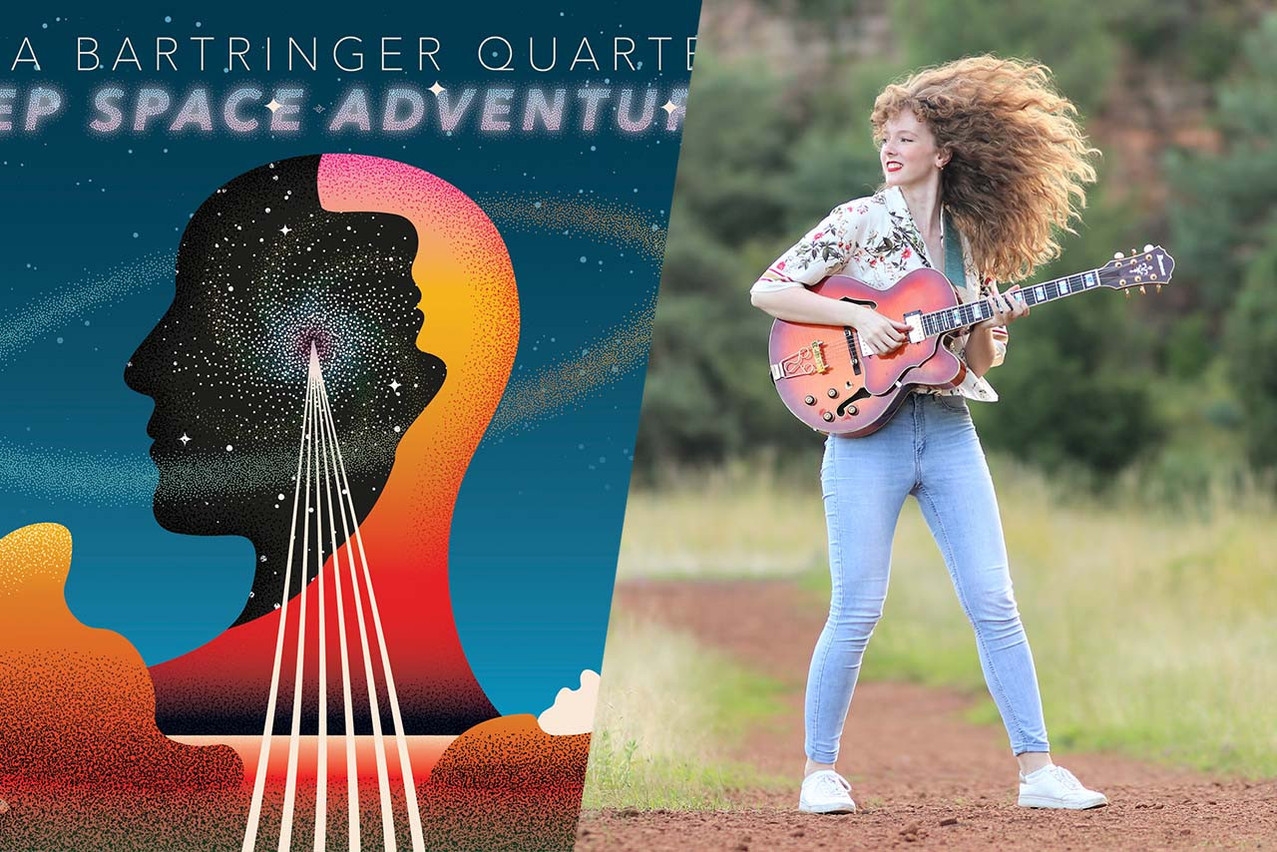Time usually feels pretty hard and fast, and especially in the age of smartphones with their perpetually synchronising internal quartz clocks; but if you leave Earth and venture into the weird physics of deep space, even time warps and goes relative.
So it might be with music, and in particular jazz: “You have all this overflow of different information,” says jazz guitarist and composer Veda Bartringer, talking about playing jazz with her quartet. “I think that’s like in the universe. There is so much we don’t know… but it’s there.”
Bartringer--unkindly put on the spot with meanderingly open-ended questions about the metaphysics of jazz and deep space--is trying to explain how jazz musicians, in the moment of performance, must negotiate anarchy with structure, improvisation with calculation. Her words get at a kind of dizzying potential for all the unheard music that’s out there.
“It’s planned chaos,” she says, landing on the phrase.
The prompt for this particular subject is Bartringer’s debut album, due out on 19 April and called Deep Space Adventure. It makes good on its title’s promise: the listener joins the band for “Lift Off” on track one, and subsequently proceeds to “Search for Light,” “Pale Blue Dot,” “Cosmic Particles,” and six other tracks before finally coming “Down to Earth.”
“We’re sitting in the rocket,” says Bartringer, setting the scene for track one and describing how she and her bandmates--Julien Cuvelier on saxophone, Boris Schmidt on bass, Maxime Magotteaux on drums--wanted to open with a moment of nervousness. To do so, they employed free jazz, with total improvisation from the quartet. “For the last track,” she continues, “coming back to Earth, we took some parts of the intro and played them backwards--and then played over it again.”
Thus, by the end of the album, the listener has been changed by space: we arrive back to the beginning to find that time has changed directions, while paradoxically continuing forward at the same time via additional improvisations on top.
How to plan chaos
“When I’m composing, I always try to have one main aspect and then work around it,” explains Bartringer, asked about her creative methodology. A particular bassline or rhythmic turn might suffice, she says, but it can get more abstract too. One professor during her studies at the Royal Conservatory of Brussels, she explains, had a series of unorthodox prompts one day: “He just told us: ‘Play something in yellow!’ And we were like--” she laughs-- “What? How do you do that?”
There is obviously no clear way to execute “playing in yellow,” but the composer still talks about how the prompt rerouted her lines of thought: “You start to imagine things, you try to link different sound aspects to different images.” This is exactly what she did on Deep Space Adventure, which draws inspiration from visual representations of the cosmos, including Hubble images. Track six, “Pale Blue Dot,” was inspired by Voyager’s famous snapshot of Earth from six billion kilometres away.
The initial concept for Deep Space Adventure came one evening while Bartringer was watching a documentary about outer space. “There was that one picture…” she snaps her finger. “I had to do something about it.”
Bartringer continues to explain her compositional process, commenting that it relies on the serendipitous output of musical exploration. “When I compose a piece, I put on the sheet all the information important to me, like the harmonic ideas, the melody. And then, without giving any indications, I give it to my musicians. And I tell them: play.” She laughs loudly and smiles. “And during the rehearsal process, I see that they maybe have other influences, other ideas than I had in mind… which are often even more rich and colourful than what I have imagined myself.”
“When you look at the communication between the musicians, nothing is planned,” she says, talking now about the performance half of the equation. “You have to react to everything.”
Classical turned jazz
Bartringer didn’t grow up with jazz in her bones. In fact, she first approached it as a way to hone her chops: she had been a classical musician since age eight, starting on the piano, adding the guitar a few years later, and then taking up lyrical singing as a teenager. “I wanted to develop my knowledge of the fretboard of the guitar, so I started taking jazz lessons. And finally, that’s where I got stuck.”
Her classical background continues to inform her work in jazz, however. “I love playing with counterpoint, taking different harmonic approaches.” For her, the lyrical singing is particularly important in creating catchy melodic lines. “I also love jazz where you have to think a lot and try to understand it,” she says--but that isn’t her approach. “It’s really important to me that my music is for everyone… that the person listening can maybe dance a bit to it, that it’s accessible.”
The press release announcing Deep Space Adventure comments that the guitarist has a “feminine sensitivity” in her style. Asked to explain, Bartringer starts by pointing out how rare female jazz instrumentalists are: if you discount singers (nearly all of whom are women, she says), she has, in six years’ study and the two years since, seen only two other women who play jazz: one pianist, one double-bassist. “That’s all.”
And this is a pity, given that women, according to Bartringer, play another jazz. “They’re softer in their improvisations,” she says, asked to elaborate. “When you’re in jam sessions, there’s always this feeling of ‘I have to be the best, the biggest, to play the most notes--it’s a very aggressive way of playing.’ And as soon as you see one female person on the scene, the atmosphere changes.”
Catch the Veda Bartringer Quartet’s at Cape Ettelbruck on 19 April, 7:00pm.
